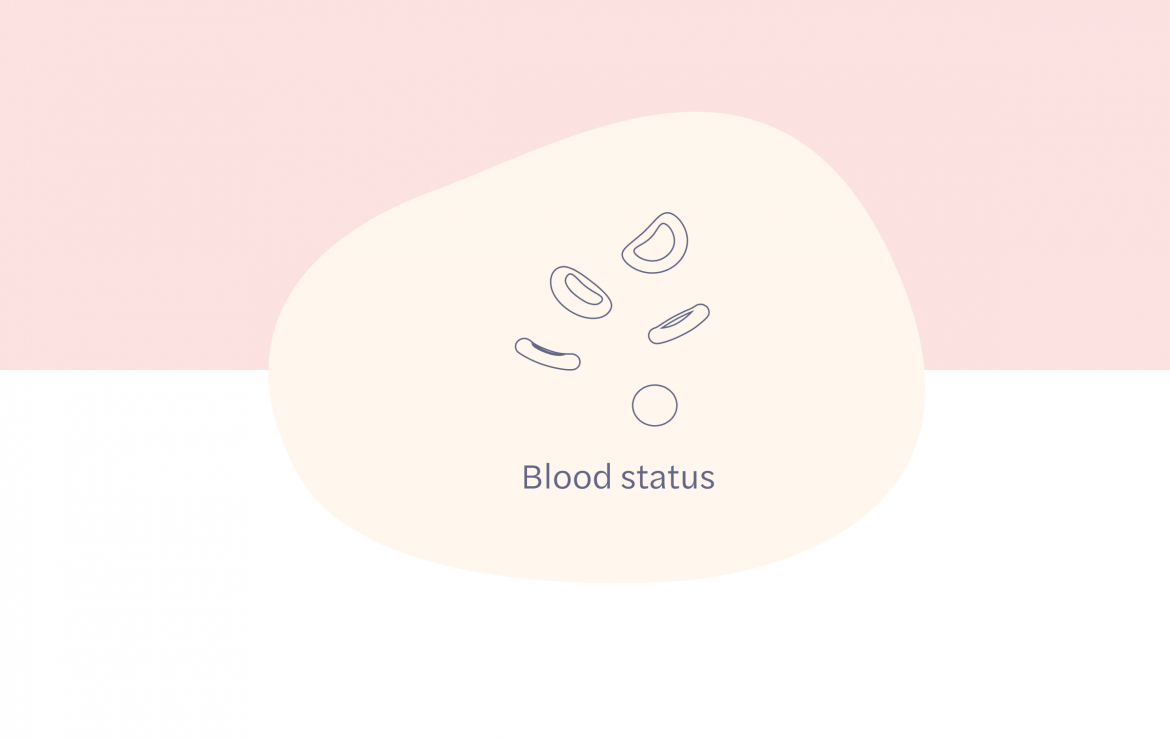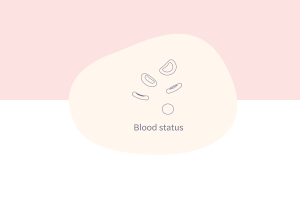Full Blood Count

Blood status
What is a Full Blood Count?
A Full Blood Count is a test that gives information about the 3 types of cells in the blood:
-
Red blood cells or erythrocytes: cells that carry oxygen to the tissues
-
White blood cells: cells involved in infectious processes
-
Platelets: participate in the formation of blood clots
With regard to the red blood cells, the Full Blood Count includes the following markers:
-
RBC (Red Blood Cell): The number of red blood cells in the blood.
-
Hct (Hematocrit): The volume percentage of red blood cells in the blood.
-
Hb (Haemoglobin): The protein in red blood cells that is responsible for oxygen transport.
-
MCV (Mean Corpuscular Volume): The size of the red blood cells.
-
MCH (Mean Corpuscular Haemoglobin): The amount of hemoglobin per red blood cell.
-
MCHC (Mean Corpuscular Haemoglobin Concentration): The average concentration of hemoglobin inside a single red blood cell.
-
RDW (Red Blood Cell Distribution Width): The range of variation in red blood cell volume.
With regard to the white blood cells, the Full Blood Count includes the following markers:
-
WBC (White blood cells): The number of white blood cells in the blood.
-
Neutrophils: A type of white blood cell that mainly fights against bacterial infections.
-
Lymphocytes: A type of white blood cell that mainly fights against viral infections.
-
Eosinophils: A type of white blood cell that is mainly active in allergy.
-
Basophils: A type of white blood cell that mainly fights against parasite infections.
-
Monocytes: A type of white blood cell that is active in some infections.
With regard to the platelets, the Full Blood Count includes the following markers:
-
Platelets: The number of platelets in the blood. Platelets are involved in the formation of blood clots and in the repair of damaged blood vessels.
-
MPV (Mean Platelet Volume): The size of the platelets. Younger platelets are larger than older ones.
Why is this analysis important?
The Full Blood Count is a basic test that is nearly always ordered when a blood test is taken. A large variety of conditions can all lead to changes in the markers in a Full Blood Count, such as vitamin deficiencies, anaemia, infection and certain allergies, but also conditions such as cancer can lead to abnormalities in the Full Blood Count.
In short, it is useful to perform a Full Blood Count to:
-
Identify the potential causes of symptoms such as fatigue, weakness, fever, weight loss, and bruising, among others
-
Detect blood disorders
-
Monitor the effects of certain medications
Results
The reference ranges for the markers in the Full Blood Count can be different depending on the laboratory and technique used. Sex and age can also affect the reference ranges. Doctors usually also take into account a number of factors when evaluating the Full Blood Count.
High levels of these markers can be associated with:
Red blood cells/Hematocrit/Hemoglobin
-
Dehydration
-
Genetic variation (such as polycytemia vera)
-
Chronic obstructive lung disease (usually associated with heavy smoking)
-
Obstructive sleep apnea (usually associated with heavy snoring)
-
Residents at high altitude
White blood cells
-
Infections
-
Inflammation
-
Severe physical or emotional stress
-
Corticosteroid treatment
-
Certain blood disorders
-
Pregnancy
Platelets
-
Infections
-
Physical stress (such as bleeding, operation or intensive physical exercise)
-
Genetic variation (such as essential thrombocytosis)
-
Splenectomy (where the spleen is removed by operation)
Low levels of these markers may be associated with:
Red blood cells/Hematocrit/Hemoglobin
-
Bleeding (such as large amounts of menstrual bleeding or repeated bleeding hemorrhoid)
-
Iron deficiency
-
Vitamin B12 and/or folic acid deficiencies
-
Kidney failure
-
Late pregnancy
White blood cells
-
Some infections
-
ChemotherapyIntake of certain medications
Platelets
-
Alcoholism
-
Vitamin B12 and/or folic acid deficiencies
-
Pregnancy
-
Intake of certain medications
Other Considerations
The level of red blood cells and platelets can vary slightly in women depending on where in the menstrual cycle the blood sample is taken.
During pregnancy, the amount of red blood cells/hematocrit/hemoglobin gradually decreases and due to increased blood volume. Also the amount of platelet decreases while the amount of white blood cells increases.
It is common for the level of white blood cells to fluctuate. White blood cell levels can vary due to exercise, stress or smoking.
Tests that include this marker
References
Patient education: Complete blood count (CBC) (The Basics) UpToDate Apr 17, 2019.










